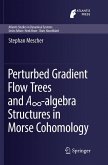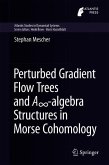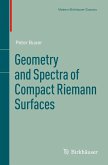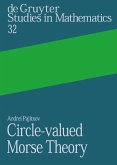This textbook presents a unified approach to compact and noncompact Riemann surfaces from the point of view of the so-called L2 $bar{delta}$-method. This method is a powerful technique from the theory of several complex variables, and provides for a unique approach to the fundamentally different characteristics of compact and noncompact Riemann surfaces.
The inclusion of continuing exercises running throughout the book, which lead to generalizations of the main theorems, as well as the exercises included in each chapter make this text ideal for a one- or two-semester graduate course. The prerequisites are a working knowledge of standard topics in graduate level real and complex analysis, and some familiarity of manifolds and differential forms.
The inclusion of continuing exercises running throughout the book, which lead to generalizations of the main theorems, as well as the exercises included in each chapter make this text ideal for a one- or two-semester graduate course. The prerequisites are a working knowledge of standard topics in graduate level real and complex analysis, and some familiarity of manifolds and differential forms.
From the reviews:
"The present book gives a solid introduction to the theory of both compact and non-compact Riemann surfaces. While modern introductions often take the view point of algebraic geometry, the present book tries to also cover the analytical aspects. ... The book is well written and constitutes a nice contribution to the existing literature on this topic." (G. Teschl, Internationale Mathematische Nachrichten, Issue 225, 2014)
"This book takes the point of view that Riemann surface theory lies at the root of much of modern analysis, and ... illustrate some of the interactions of analysis with geometry and topology. ... While much of the book is intended for students at the second-year graduate level, Chapters 1 and 2 and Section 5.2 (along with the required background material) could serve as the basis for the complex analytic analysis component of a year-long first-year graduate-level course on real and complex analysis." (V. V. Chueshev, Zentralblatt MATH, Vol. 1237, 2012)
"The present book gives a solid introduction to the theory of both compact and non-compact Riemann surfaces. While modern introductions often take the view point of algebraic geometry, the present book tries to also cover the analytical aspects. ... The book is well written and constitutes a nice contribution to the existing literature on this topic." (G. Teschl, Internationale Mathematische Nachrichten, Issue 225, 2014)
"This book takes the point of view that Riemann surface theory lies at the root of much of modern analysis, and ... illustrate some of the interactions of analysis with geometry and topology. ... While much of the book is intended for students at the second-year graduate level, Chapters 1 and 2 and Section 5.2 (along with the required background material) could serve as the basis for the complex analytic analysis component of a year-long first-year graduate-level course on real and complex analysis." (V. V. Chueshev, Zentralblatt MATH, Vol. 1237, 2012)








